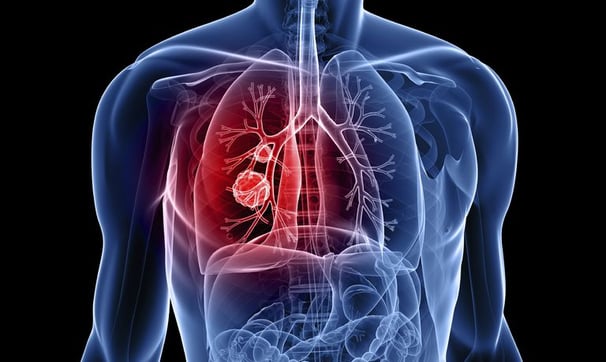Understanding Cancer: Causes and Effects
Learn about cancer, a disease characterized by the uncontrolled growth of abnormal cells in the body, forming tumors and disrupting normal bodily functions. Gain insights on the causes and effects ...


Cancer is a broad term that refers to a group of diseases characterized by the uncontrolled growth and spread of abnormal cells in the body. These abnormal cells can form tumors or invade nearby tissues and organs. Cancer can occur in almost any part of the body.
Cancer is a complex group of diseases characterized by the uncontrolled growth and spread of abnormal cells in the body. These abnormal cells are referred to as cancer cells, and they can form malignant tumors or invade nearby tissues and organs. Unlike normal cells, cancer cells don't follow the body's natural regulations for growth and division. Instead, they continue to multiply and accumulate, often leading to the formation of masses of tissue known as tumors.
Key points to understand about cancer:
Causes: Cancer can be caused by a variety of factors, including genetic mutations, exposure to carcinogens (cancer-causing substances) such as tobacco smoke and certain chemicals, viral infections (e.g., human papillomavirus and hepatitis B and C), and radiation exposure.
Types: There are more than 100 different types of cancer, each classified based on the type of cells involved and where it originates in the body. The most common types include breast, lung, prostate, colorectal, and skin cancer.
Stages: Cancer is typically categorized into stages, which describe the extent of the disease's spread. Staging helps doctors determine the appropriate treatment and prognosis for a patient.
Metastasis: Cancer cells have the ability to spread to other parts of the body through the bloodstream or lymphatic system. This process is known as metastasis and can make cancer more challenging to treat.
Symptoms: The symptoms of cancer can vary depending on its type and location. Common symptoms include unexplained weight loss, fatigue, pain, changes in the skin or the appearance of new lumps, and persistent coughing or changes in bowel habits.
Diagnosis: The diagnosis of cancer often involves a combination of techniques, including imaging tests (X-rays, CT scans, MRI), blood tests, biopsies (removing a sample of tissue for examination), and other specialized tests.
Treatment: Cancer treatment options depend on the type, stage, and location of the cancer, as well as the patient's overall health. Common treatments include surgery, radiation therapy, chemotherapy, immunotherapy, targeted therapy, and hormone therapy.
Prevention: Some types of cancer can be prevented or their risk reduced through lifestyle changes like quitting smoking, maintaining a healthy diet and weight, limiting alcohol consumption, protecting the skin from excessive sun exposure, and getting vaccinated against cancer-causing viruses.
Research: Ongoing scientific research and clinical trials are continually improving our understanding of cancer and developing new treatments and therapies.
Cancer is a significant public health concern worldwide, and efforts are ongoing to raise awareness, improve early detection, and advance treatment options to reduce its impact on individuals and communities. Education and research play a crucial role in addressing this complex disease and working toward better outcomes for cancer patients.
Since you're based on an educational platform and are interested in research-oriented topics, here's some information about types of cancer:
There are numerous types of cancer, and they are typically categorized based on the type of cells where the cancer starts. Some common types of cancer include:
Breast Cancer: This cancer originates in the breast tissue, most often in the milk ducts or lobules. It affects both men and women, although it is more common in women.
Lung Cancer: Lung cancer begins in the lungs and is often associated with smoking. There are two main types: non-small cell lung cancer and small cell lung cancer.
Prostate Cancer: This cancer develops in the prostate gland, which is a part of the male reproductive system. It is the most common cancer in men.
Colorectal Cancer: Colorectal cancer can start in the colon or rectum. It often begins as a growth called a polyp that can become cancerous over time.
Skin Cancer: Skin cancer can originate in the cells of the skin. The most common types are basal cell carcinoma, squamous cell carcinoma, and melanoma.
Leukemia: Leukemia is a cancer of the blood and bone marrow. It affects the production of blood cells and is classified into different types, including acute lymphoblastic leukemia and chronic myeloid leukemia.
Lymphoma: Lymphoma affects the lymphatic system, which is a part of the immune system. Hodgkin lymphoma and non-Hodgkin lymphoma are the two main types.
Brain Cancer: Brain tumors can be benign (non-cancerous) or malignant (cancerous). Malignant brain tumors can be life-threatening.
Ovarian Cancer: This cancer occurs in the ovaries of women and is often diagnosed at an advanced stage.
Pancreatic Cancer: Pancreatic cancer starts in the pancreas and is often difficult to detect in its early stages.
These are just a few examples, and there are many more types of cancer, each with its unique characteristics and treatment approaches. It's important to note that advances in medical research and technology continue to improve our understanding of cancer and treatment options. If you have any specific questions about a particular type of cancer or related topics, feel free to ask for more information.
